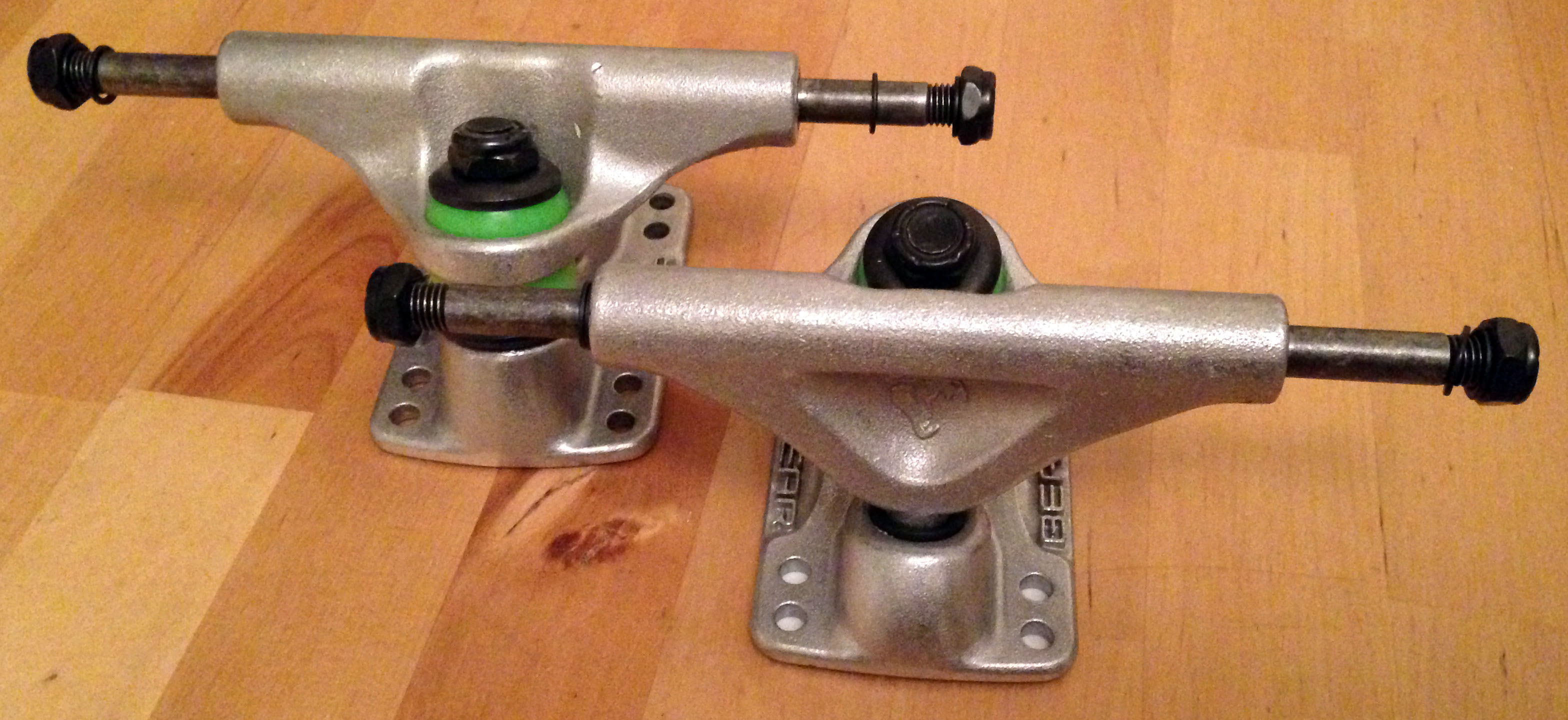For a long time, freestylers have really only had two major choices for trucks: Tracker and Independent, both of whom offered 10Xmm trucks for cruisers, slalom and freestyle. And while I’ve happily been using Tracker’s 106mm Racetrack X for nearly 15 years, the new flood of longboard companies and cruisers has given freestylers a much greater array of choices for the near-standard 7.25″ board width, and I was starting to get curious as to what was actually available for the modern freestyler.
After searching out as many different options as possible for the still ongoing truck info page (which will appear eventually), there was one that really stood out as the most promising: Bear’s Polar 105mm truck.
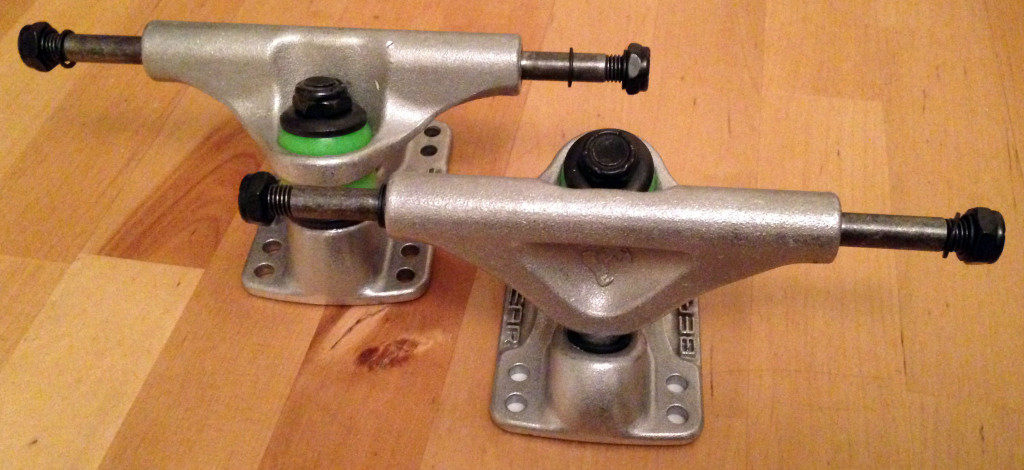
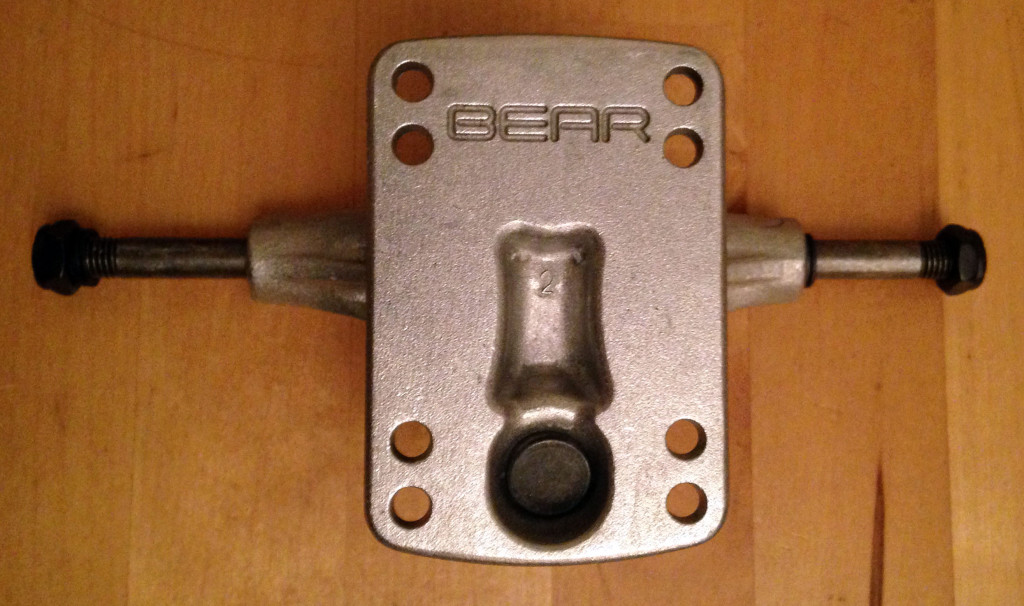
Well, Bear eventually came through with their 105mm Polar trucks. With a hangar that measures 104mm – 1mm off the marked width – they come in fractionally shorter than Indy 109s (actual hangar length of 108.5mm, according to Michael Erskine) and 106mm Tracker Racetracks (actual hangar length of 107mm). With Seismic Focus wheels, this means you get slightly more lean towards the wheels in rail with a 7.25″ or 7.3″ board, but also opens the possibility of fitting them on a 7.1″ board with fewer washers or shallower wheels. Personally, I feel like putting them on a fresh Moonshine freestyle board with Seismic wheels, you get roughly the same rail stability that you used to get on a Capital Mini with (the slightly wider) Tracker Fultracks and (the slightly shallower) Nicotine wheels, which isn’t a bad thing. It’s a very solid setup that lends itself very well to landing in rail.
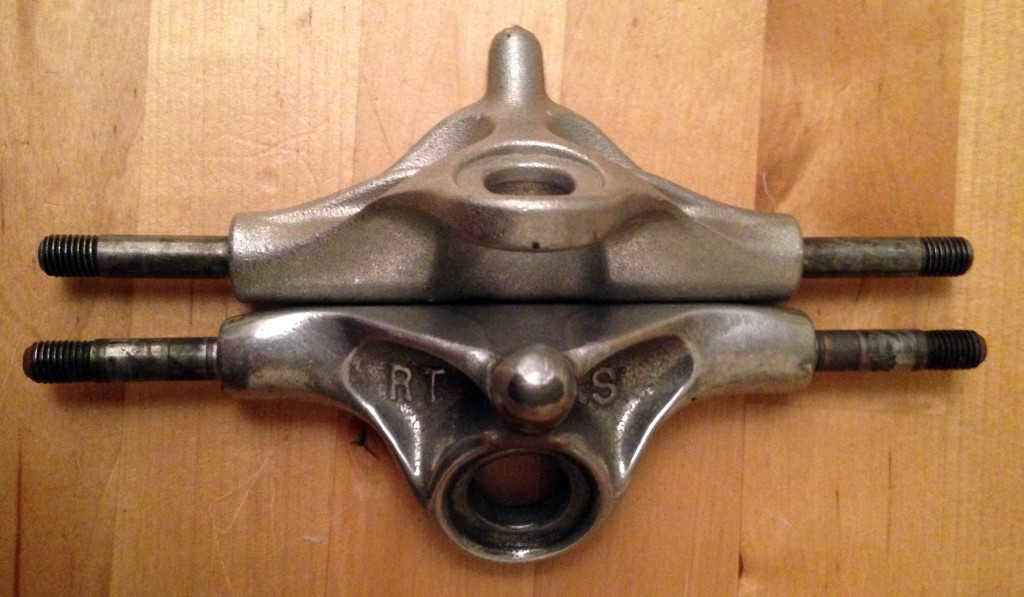
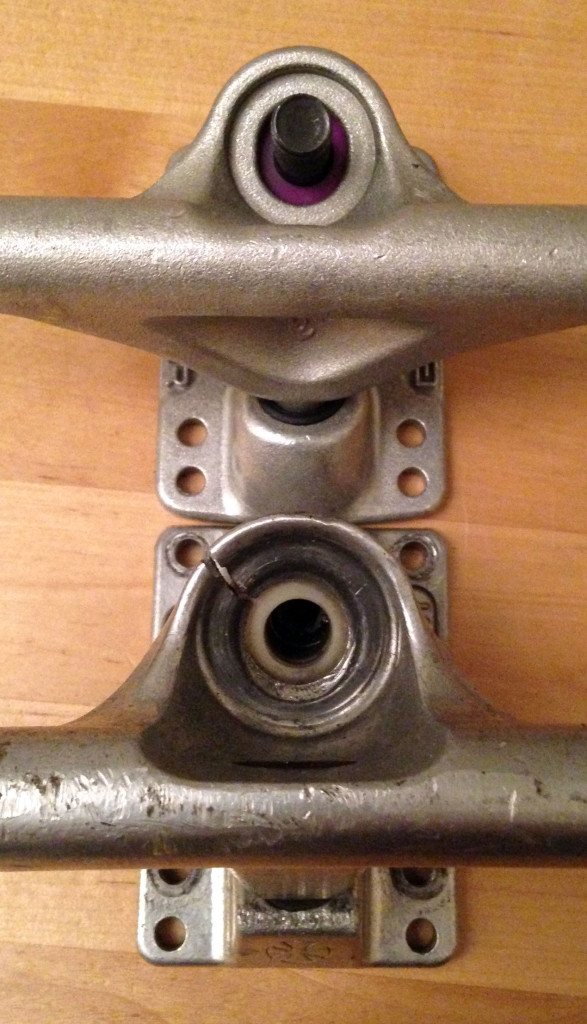
In terms of finish and strength, the truck looks the part. Out of the box, both the machining and the general design looks good. There are no obvious compromises of strength for the sake of lightness, and typically weak areas in the truck (under the hangar and around the kingpin) have all been strengthened. The “pinch” area in the baseplate (the space between kingpin and pivot cup) is solid, too. Meanwhile, the flat face of the hangar has a large indentation to lose some unnecessary material, so the truck ends up around the same weight as the Indy 109, despite the more solid feeling throughout. One example of Bear’s attention to detail is that during the first skate session I noticed a small amount of lubricant seeping from the pivot cup; this was almost certainly why they felt “broken in” almost straight out of the gate, and is another nice touch. Why more truck manufacturers don’t do this is beyond me.
Another surprise is the ride height. Most modern 10X trucks are fairly tall, hovering around the 55mm mark from baseplate to axle center (the outlier at the top end is the Paris 108, which comes in at 57.15mm due to its taller hangar and thicker baseplate). Meanwhile, the Bear is a mere 50.8mm according to the manufacturer. While I prefer a taller board (more stability in rail, more wheelie clearance, better kickflips), this will probably be a good thing for anyone who likes ollie tricks (I just stuffed some taller risers underneath them). Despite this lower height, you still get full kingpin coverage for no handed pogos without having to compromise with shorter bushings. I was caught out by the Indy 109s – it’s very difficult to fit a standard barrel and cone bushing combination on them, and usually you need a smaller top cone. That’s not the case with the Bear trucks. Not only does this make sourcing bushings a bit easier (important in a country where finding Khiros is hard enough as it is), but it gives you more urethane above the hanger for more rebound and a more reliable turn.
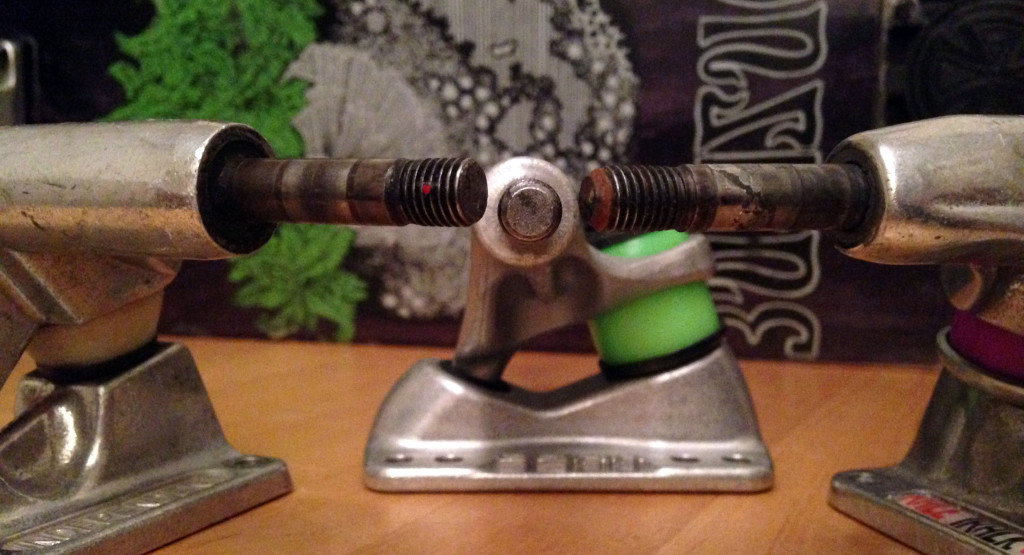
And while the turning might be the last thing many freestylers will care about, I’ve got to say this: they do turn well. I took out three different freestyle setups to compare turning performance (all with 10Xmm trucks, purple Khiro bushings and Seismic wheels to eliminate as many variables as possible), and while the Racetrack S possibly provided the best general turn for freestyle, with the most predictable and stable performance throughout the carve, the Bears were effectively an improved Indy, featuring Indy’s willingness to turn without Indy’s tendency to “dive” into it. What this translates to in freestyle is that you don’t need to crank the truck nut all the way down to remove instability, and can keep some turning performance without compromising the predictability of more technical or awkward tricks. Hopefully, it should also result in fewer broken kingpins, as they’re not under as much stress as the average Indy 109mm or Tracker Racetrack X setup; whether that will prove correct or not will only be seen in time.
On the kingpin front, Bear are also using the modern splined kingpin, which means Tracker may be the only holdout in the 10Xmm size still using the good ol’ hex head kingpin as standard. (For those who haven’t heard the debates on the podcast about why hex heads are arguably better, they’re not only generally easier to remove, they’re cheaper to replace due to the fact they’re just a standard grade 8 bolt.) However, having knocked out the original splined kingpin (which came out surprisingly easily, and I’m not sure whether or not that’s a good thing), it looks almost like the baseplate might be able to grip a hex head kingpin if one was installed. Again, until I snap a kingpin, I won’t know for sure, but it looks like a possibility.
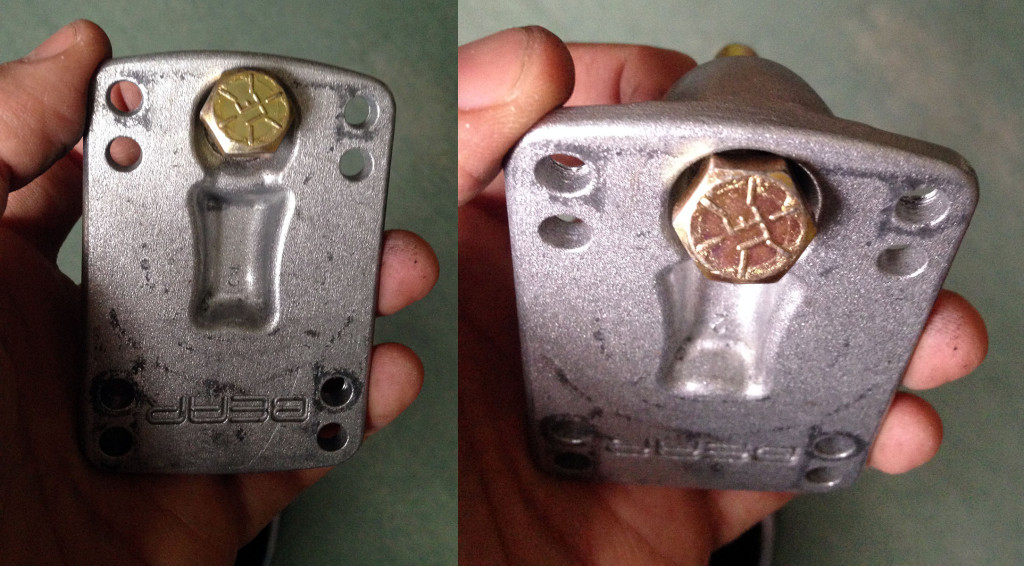
So, overall, the Bears are good. For those who are looking for a low truck, the Bears should be a no-brainer over every other option at this size. I’ll certainly be recommending them over the Indy and Paris trucks wherever possible; I think they’re a much more solid and interesting alternative, with a lot going for them. Another benefit (in the UK at least) is the price – a set of Indy 109s or Paris 108s will typically be around the £50 mark before you even factor shipping into the equation, but the Bear Polar 105 can be had for £37.99 + postage. Against the comparatively-priced Trackers, it’s a bit more even – the Racetrack X is similar geometry and the Racetrack S is arguably a better ride, but the Bears are probably more suited to freestyle than the S (which really suffers under the stress of coconut wheelies) and the X due to the lower kingpin and the wheelbase adjustment options.
The downside is that they’re really hard to find – in the UK at least. As I write there’s a couple of sets on eBay, so grab them now if you’re interested. I think in the US you can buy from Landyachtz direct, but I’m not sure what their distribution is like otherwise. Still, hunt some down – you won’t be disappointed.
